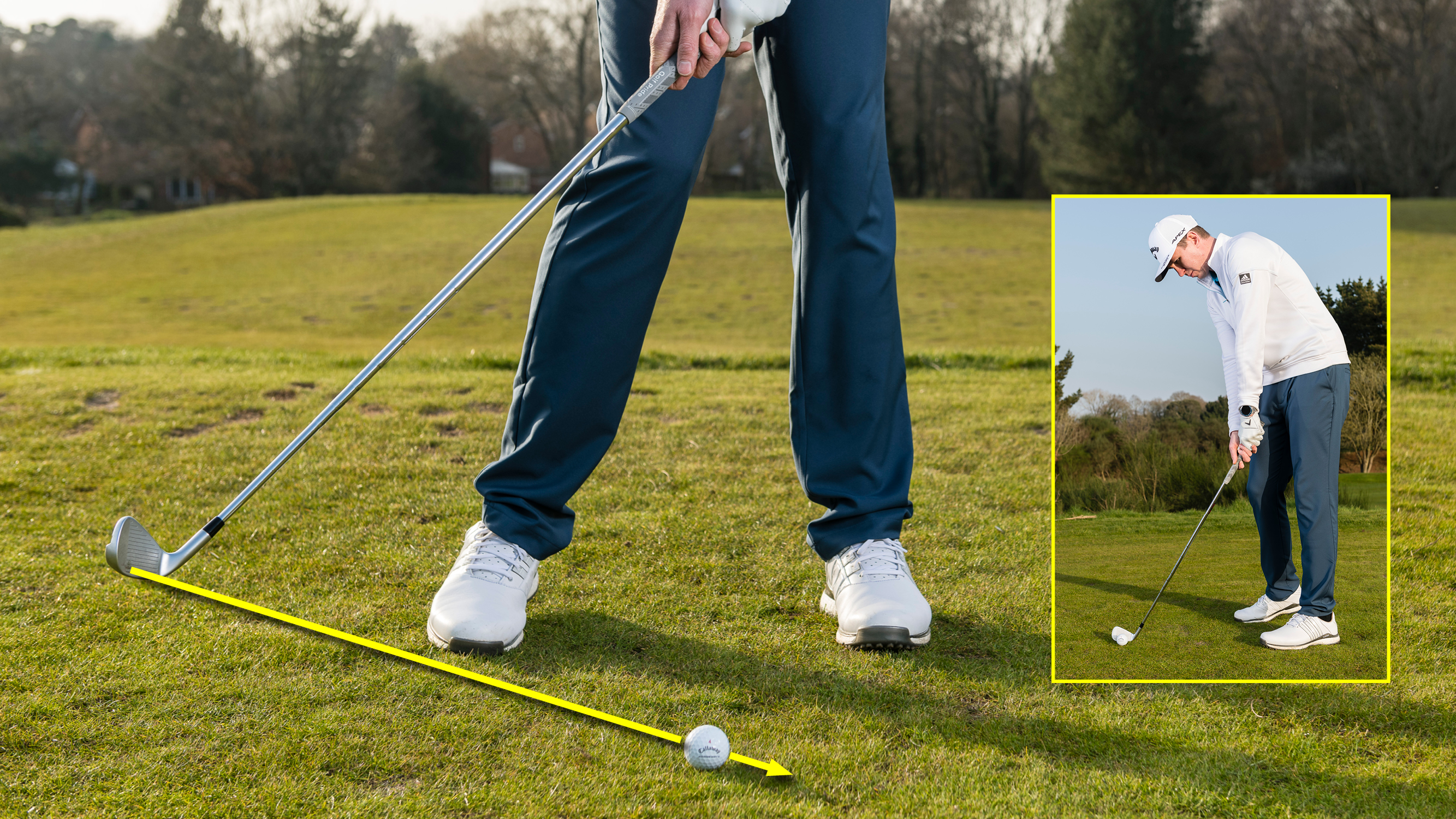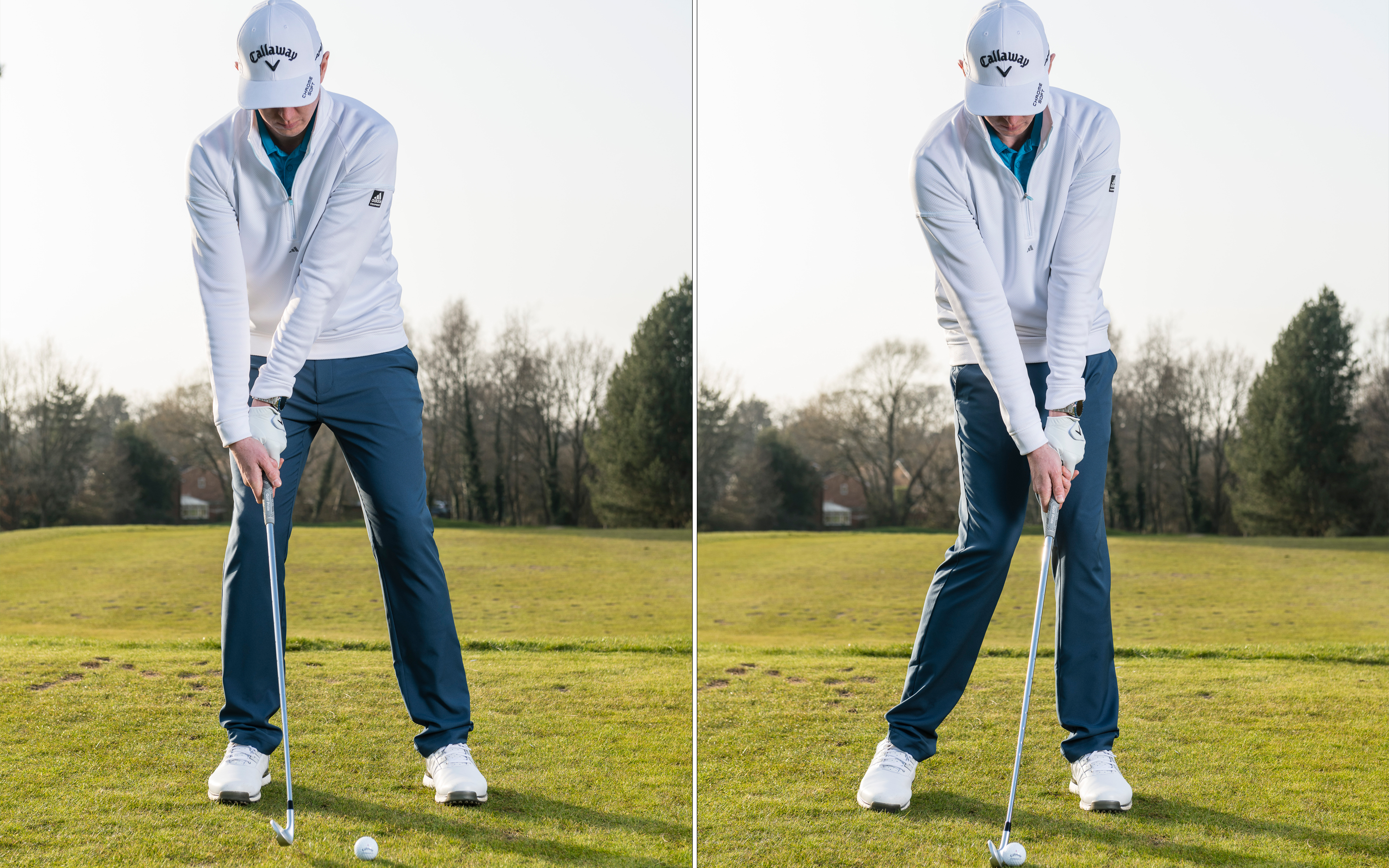How To Compress The Golf Ball - Try These Two Simple Drills For Better Iron Shots!
In this video, PGA pro Ben Emerson offers a great drill for how to compress the golf ball with your irons

Golf Monthly created this content as part of a paid partnership with Callaway. The contents of this article are entirely independent and solely reflect the editorial opinion of Golf Monthly.
How to compress the golf ball
It's one of the best feelings in golf: you've ripped through an iron shot, striking the ball first and removing some turf post-impact. It's something tour players do time after time and in the video and article below, PGA pro Ben Emerson runs through how to compress the golf ball with your irons using this simple drill...
One of the questions I get asked a lot is, ‘how do I compress my irons?’ It’s a really interesting one because when a lot of you are working on your swings, most of the time you're focusing on things like how to improve your takeaway or get into a certain position in the downswing. However, the only thing the ball really understands is impact, so it’s vital for a player to develop a better understanding of what it looks like.
What has made this difficult is that golfers have been misled over the years when it comes to the ideal set-up. If you think of a normal address position, with the ball in the middle of your stance, most people will have their hips very level and their hands sitting straight below the middle of their chest. But impact doesn’t look like that.
Understanding The Impact Position
If this is something you struggle with, it's vital to fix your golf swing posture, but it's also worth putting more of your attention to the position in the swing that's ultimately the most important. When approaching impact, some of the best players in the world do something very different to their amateur counterparts. Their hips have cleared, their chest has cleared and their hands are in front of the golf ball - this is one of the things all great golfers do.
When you’re trying to get the ball to go into the air, especially when just starting out in the game, it can be hard to get your head around this process. That’s because it seems counter-intuitive to hit down on the ball to make it go up. So what ends up happening is golfers get their weight onto their back foot and they cut across the ball in an attempt to scoop it into the air. That's the opposite to what you want to do and is also why some golfers end up needing an over the top golf swing drill if they've developed a slice.

Avoid scooping the ball (left) and commit to hitting down on it to make it go up (right)
The consequences of this disastrous move are two-fold. For starters, you lose so much distance because the club isn’t in the impact position it’s been designed for. It’s either back how it started with the shaft completely perpendicular to the ground or it’s leaning back, adding even more loft to the club. In addition, you also lose control of the strike as the margin for error is greatly reduced.
Get the Golf Monthly Newsletter
Subscribe to the Golf Monthly newsletter to stay up to date with all the latest tour news, equipment news, reviews, head-to-heads and buyer’s guides from our team of experienced experts.
So, a drill to get you back on track involves starting at impact and working back from there. Take your normal set-up position, determining how wide your stance should be, then push your hands forward and rotate your hips and chest as Ben demonstrates in the video above - that’s where you want to be when you strike the ball.

This drill will help you master the low punch shot
Rehearse how that feels before doing some awareness training. Swing to the top and then try to return to that new impact position. Don’t be afraid to exaggerate here as that will help you ingrain the move needed to improve your ball striking. It'll also help you learn how to play the low punch shot, which is so valuable to have in your locker.
Tee Peg Drill
Once you have developed a feeling for how to compress the golf ball with the right impact position, it is time to put the move into action. Another great drill is to place a tee peg in the ground, two centimetres nearer the target then the ball. Now hit some shots, aiming to strike the tee peg. This works really well by forcing you to focus on a spot in front of the ball. Without thinking about it, you'll develop a better (steeper) angle of attack - ideal for good iron play.
Add these drills into your practice routine. It'll feel alien at first, but over time, it will enable you to compress your iron shots so much better and add distance and accuracy to this part of your game.

Location: Mottram Hall
Alex spent a great deal of time learning the game from fellow northwest golfer, Andrew Murray, who was a European Tour regular from 1979 to 1995. He spent three years on the European Tour caddying for Andrew’s son, Tom, before taking his PGA qualifications. His passion for the game and personality in front of the camera has helped him to create a thriving social media platform on Instagram and YouTube, where he offers a whole host of tips and advice to help viewers shoot lower scores.
Most significant influences on your teaching:
Mike Bender's book, 'Build The Swing Of A Lifetime', which I read during my PGA qualifications. He uses so many different tools to help students deliver the club better when hitting the golf ball. Andrew Murray, too. He helped form the way I interact with golfers and simplified what can be a complex game for a club golfer.
Advice for practice:
I like to get students to work in sets of five golf balls – three drills shots to two course shots. The drill shots have no consequence, but with the two course shots, I ask the student to create a green or fairway and go through a full routine.
Greatest success story:
One of my students hadn’t played golf for ten years - he'd lost his love for the game. After watching my online Instagram and YouTube content, he came for several golf lessons and has now joined a local golf club. Knowing I've helped get someone back into golf... you can't beat that.
-
 RBC Heritage Prize Money Payout 2025
RBC Heritage Prize Money Payout 2025Scottie Scheffler defends his title at Harbour Town in the latest of the PGA Tour’s signature events
By Mike Hall Published
-
 The Last Time Rory McIlroy Won A Major (Prior To The 2025 Masters)....
The Last Time Rory McIlroy Won A Major (Prior To The 2025 Masters)....We wind the clock back to the year 2014, when Rory McIlroy was the heir-apparent to Tiger Woods
By Michael Weston Published
